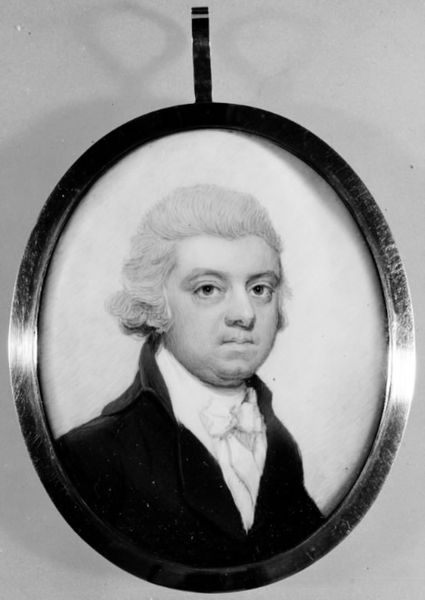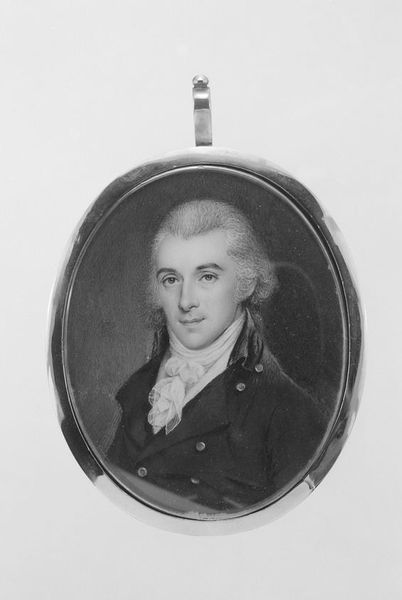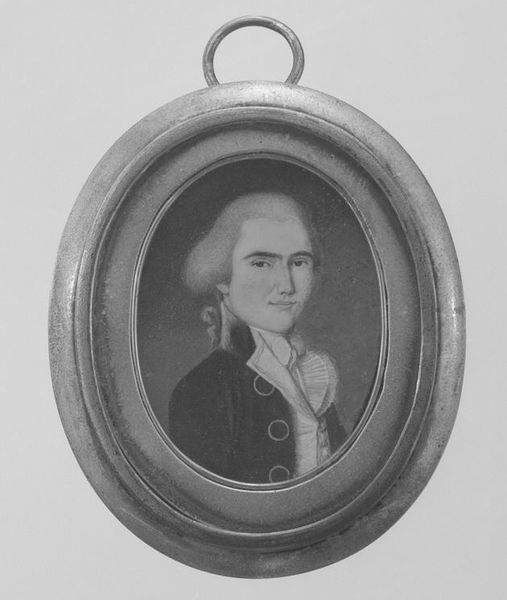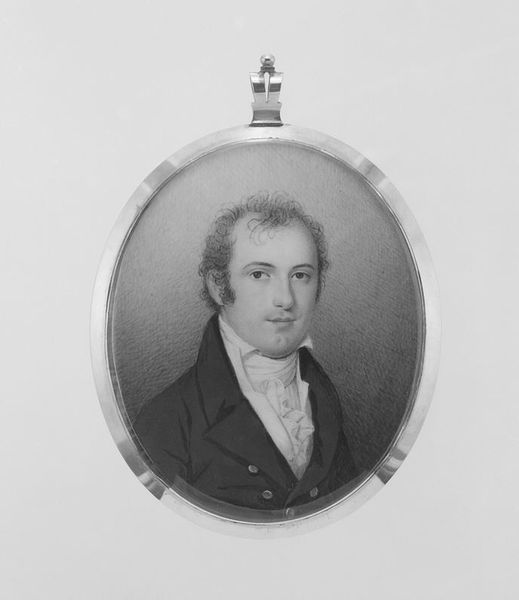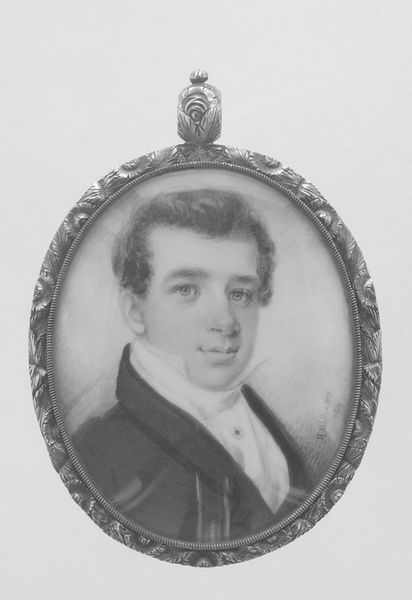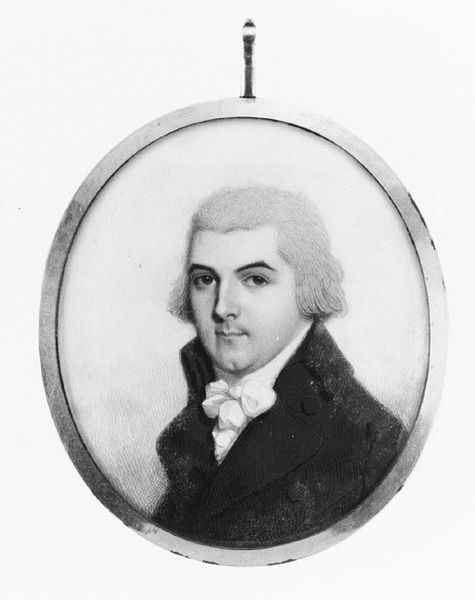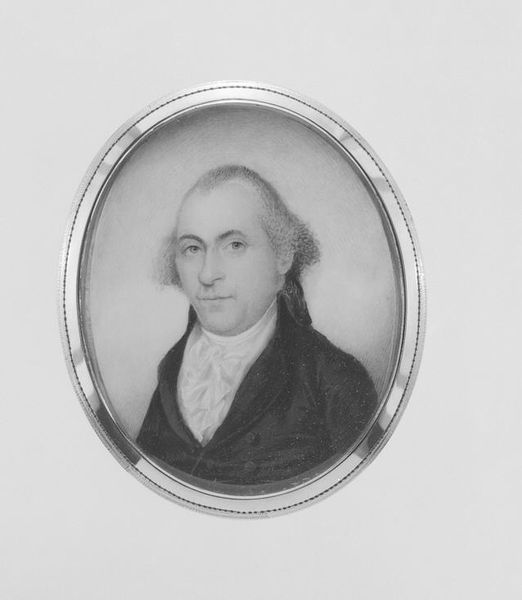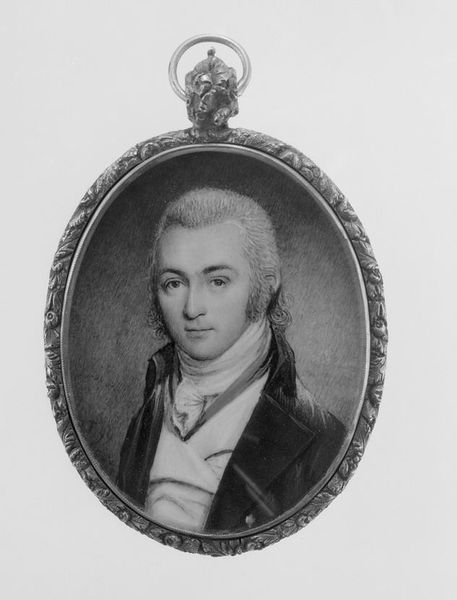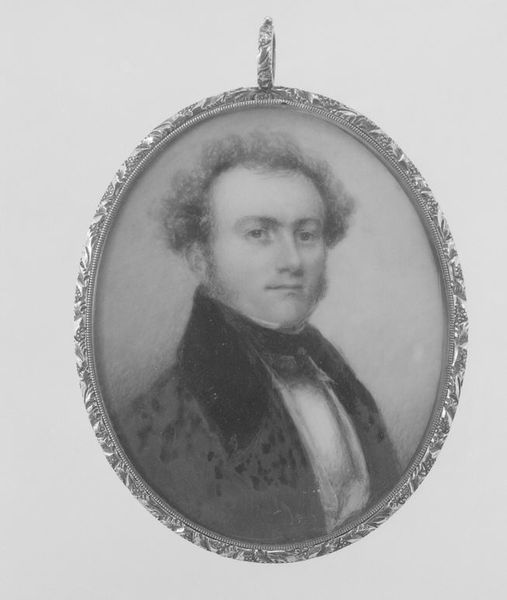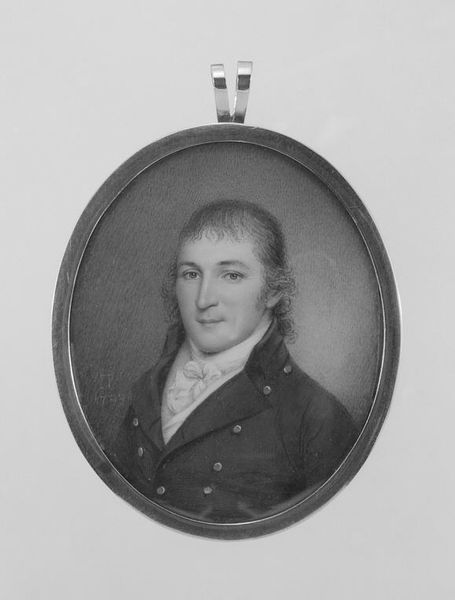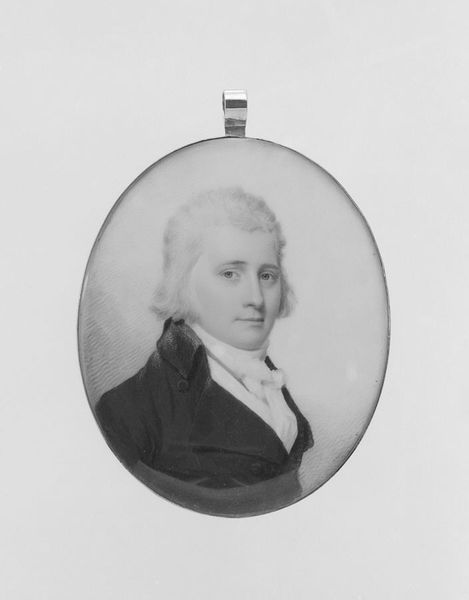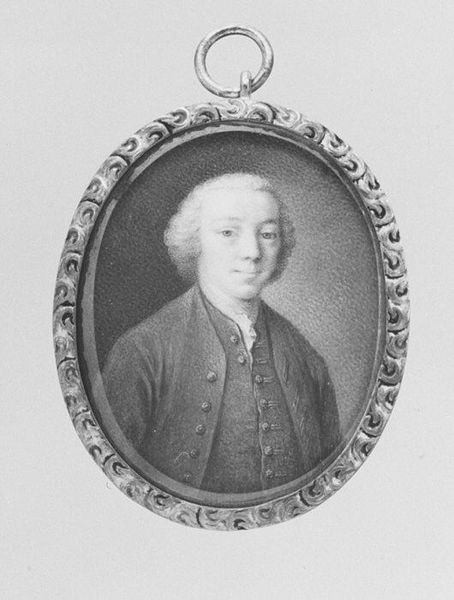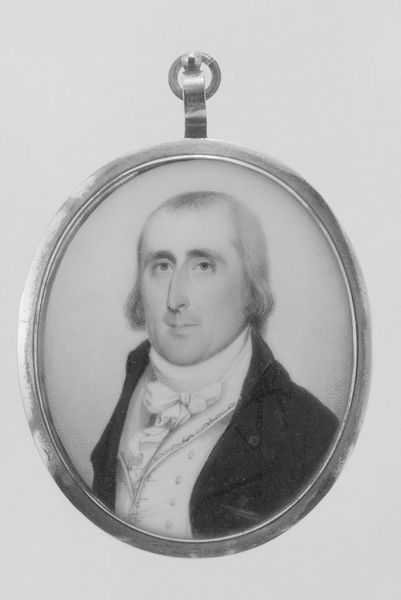
painting, dry-media, pencil
#
portrait
#
neoclacissism
#
painting
#
dry-media
#
romanticism
#
pencil
Dimensions: 2 11/16 x 2 3/16 in. (6.8 x 5.6 cm)
Copyright: Public Domain
Curator: Here we have "Portrait of a Gentleman" by Benjamin Trott, created sometime between 1793 and 1803. It's a small oval portrait, a delicate rendering in pencil. Editor: My first impression is of a sort of constrained elegance. Look at the sharp contrast of the dark coat against the white cravat and powdered hair, all framed by that polished metal border—likely silver? It speaks to me of class and refinement, but also a certain rigidity. Curator: Yes, and the oval format itself contributes to that feeling, recalling the tradition of portrait miniatures, often worn as jewelry or kept close as tokens of affection. Consider the image this would project: discretion, intimacy, remembrance. Editor: It's fascinating how the choice of materials—pencil, paper, and perhaps a silver frame—conveys so much about the subject's status and the artistic practices of the time. The relative cost would have restricted this type of intimate portraiture to a very specific clientele. Curator: Indeed, and we should note how the meticulous shading and attention to detail, especially in the subject’s face, hints at a broader cultural interest in physiognomy – the pseudo-science of discerning character from outward appearance. What narratives might the shape of his brow, or the set of his mouth, suggest? Editor: I see the artist prioritizing control through a meticulous layering of strokes in a rather laborious way. Given how it functions almost as a wearable object, that labor and artistry enhance the prestige. Curator: I concur. And there is such enduring power in the symbolism inherent in portraiture--a capturing, if not immortalizing, of an individual's likeness. Editor: Looking closely, it is possible to interpret how this image encapsulates a relationship between labor and worth, status and representation. It feels deeply entwined with the materiality of the era. Curator: It leaves us contemplating the enduring power of images to connect us to the past and explore human character. Editor: Precisely. We glimpse how this tiny artwork provides insights into a world driven by social position.
Comments
No comments
Be the first to comment and join the conversation on the ultimate creative platform.
